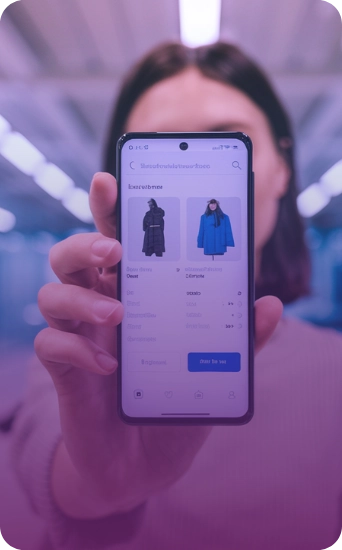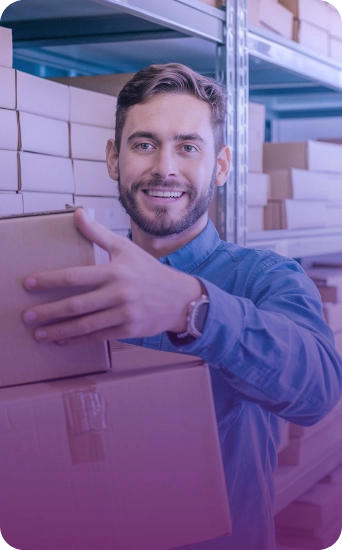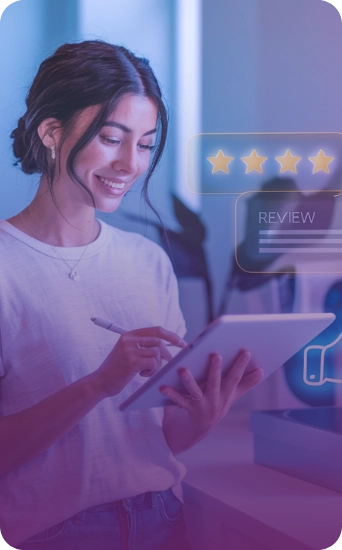The reverse logistics process has become a key component of any streamlined and successful supply chain. To help you get started, here's everything you need to know about it.
Many people associate reverse logistics with simply covering returns, but it's much broader than that. More than just understanding "what reverse logistics is", it's important to know the history of reverse logistics, its benefits and why it's a practice on the rise, especially in the after-sales industries.
Due to the sheer volume and cost of processing returns, reverse logistics today presents one of the biggest operational challenges in the virtual marketplace. And as more retailers offer free shipping, a greater number of consumers are taking the opportunity to return products because they know there will be no cost to them. All to be more satisfied with their purchase! Understand what reverse logistics is, and how its use can impact on the sales process and your relationship with your customers.
What is reverse logistics?
Reverse logistics is the return journey that a product may have to make in the internet shopping process. That is, from the consumer to e-commerce.
In other words, it's a type of supply chain management that moves goods from customers back to sellers or manufacturers. Once a customer has received a product, processes such as returns or recycling require reverse logistics.
Reverse logistics starts with the end consumer and goes back through the supply chain to the distributor or from the distributor to the manufacturer. Reverse logistics can also include processes in which the end consumer is responsible for the final destination of the product, including recycling, refurbishment or resale.
This can happen for a variety of reasons, the most common of which are returns or exchanges of clothing, footwear and electronic goods.
It is worth remembering that Consumer Protection Code predicts that the customer has up to seven days after receipt of the order to request an exchange or return of the product purchased. But as well as staying up to date with legislation, offering a simple and well-defined reverse logistics process also plays an important role in customer experience in e-commerce.
After all, in e-commerce, the sale doesn't end when the item is delivered to the recipient's address. The online store's position on possible problems is key to defining customer satisfaction.
Reverse logistics vs. traditional logistics
The traditional flow of products starts with suppliers and goes to a factory or distributor. From there, the goods go to retailers and customers. Reverse logistics management starts with the consumer and, in the opposite direction, returns the products to any point in the supply chain.
How to organize reverse logistics in your e-commerce?
Defining reverse logistics processes is part of the freight strategy adopted by e-commerce. Therefore, you should have a routine already set up for these situations.
In short, you need to organize, monitor and optimize all the steps involved in returning or replacing products on the way back to the online store.
For example, what does the customer need to do to send the product back to you? And, most importantly, how can you make it easier for them? Let's list three basic points:
Posting the package to the courier is the customer's responsibility. But you can speed things up on their side by sending a freight label ready for shipment.
The the cost of shipping is borne by the shopkeeper. It is therefore important that you find the most favorable conditions.
Ideally, customers and shopkeepers should have access to the parcel trackingto ensure transparency in the process.
The importance of reverse logistics for your business
Reverse logistics is important because it maintains an efficient flow of goods. The process reduces costs, creates value, reduces risks and completes the product's life cycle.
It also produces financial benefits while having a positive impact on the environment and company culture. Refining processes for what happens to products after delivery helps retain customers and save money.
Product data collected when interacting with customers after delivery is an advantage of well-executed reverse logistics. The data provides information about an organization's supply chain and an opportunity to improve products and/or the customer experience.
If well executed, it also leads to better visibility of the supply chain, leading to benefits such as:
- Reducing costs
- Greater customer satisfaction
- Better customer retention
- Faster and better service
- Reducing losses
- Better brand sentiment
- Waste reduction and greater sustainability
Experts say that by 20% of everything purchased will be returned. Returns are an expected part of commerce today, so the lack of a comprehensive program will disappoint consumers, leading to poor reviews. Therefore, the key to success is to treat reverse logistics with the same level of strategy, management oversight and investment as outbound logistics.
Social Digital Commerce has the best reverse tool studies for your e-commerce. This way your customer's order will be returned to the online store in the simplest way and with the best conditions.
Want to increase your online sales? We deliver e-commerce projects according to your company's needs.
Follow our networks:










